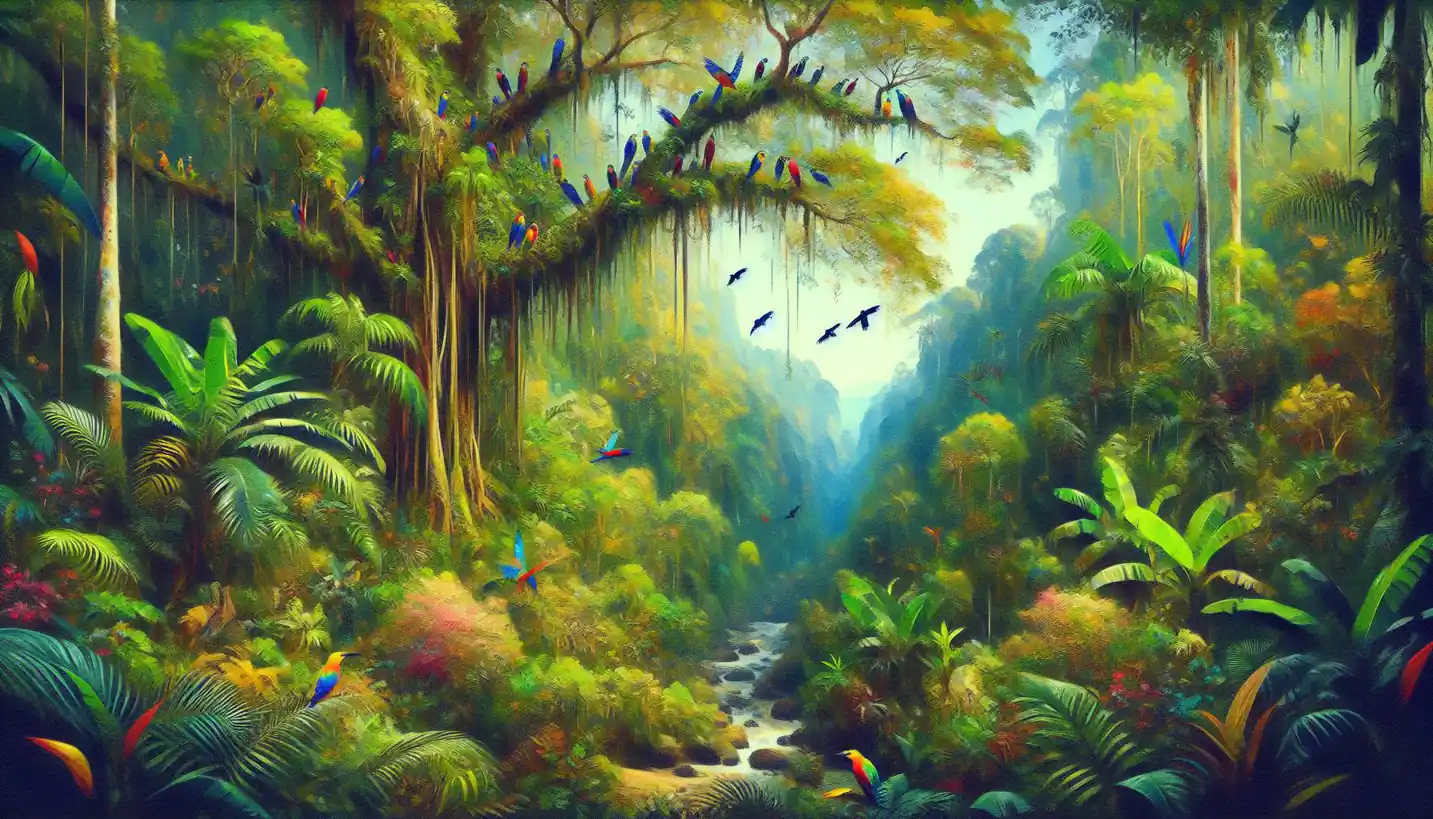· Geography · 5 min read
Phylogeography: Tracing the Journey of Life Across the Map
Phylogeography charts life's journey across regions, unraveling genetic trails. Dive into how geography and genetics intertwine to map species' pasts.

Ever thought about how plants and animals wandered across the Earth over millions of years? Phylogeography dives into this fascinating question. It’s like being a detective, but instead of solving crimes, you’re unraveling the mysterious journeys of life as species spread across different regions. Let’s dig deeper into this captivating science!
Phylogeography is the study of the historical processes that could be responsible for the contemporary geographic distributions of individuals. This field merges the precision of genetic technologies with the expansive perspective of geography to understand how species and populations evolve in space and time.
The Crossroads: Genetics Meets Geography
Imagine looking at a world map where you could see the paths taken by various species over millennia. Phylogeography helps create such maps, revealing how certain species ended up where they are today. It combines genetic data and geographical information to explore the historical and environmental factors that shape the distribution of organisms. For instance, why does a particular bird species appear both in Africa and Australia? By examining their DNA, phylogeography can trace ancestral lineages and migration routes.
The Historical Puzzle Pieces
To understand phylogeography, think of it as piecing together a giant jigsaw puzzle. The puzzle pieces come from two main sources: genetics and geography. Scientists collect genetic samples from individuals of a species and use them to reconstruct evolutionary histories. By comparing DNA from different populations, they can infer how these groups are related and how they’ve spread over time.
Geography plays a crucial role here, as physical barriers like mountains, rivers, and oceans can have a significant impact on how species move and evolve. Historical events like ice ages or the movement of tectonic plates have also shaped these migrations. For example, during the Ice Age, massive ice sheets pushed species toward warmer climates, drastically altering their geographic ranges.
A Real-Life Story: The American Black Bear
Let’s take the American black bear as an example. These bears are found from Canada down to Mexico. But how did they spread across such a vast area? By analyzing the bear’s genetic variations across different regions, researchers discovered that as the glaciers retreated at the end of the last Ice Age, black bears began to migrate northward and diversify into different groups. This migration and adaptation helped them thrive in a range of environments, from the swamps of Florida to the forests of the Canadian Rockies.
Tools of the Trade: Molecular Techniques
The magic of phylogeography happens in the lab, where scientists use molecular techniques to decode DNA. Advances like DNA sequencing allow researchers to read the genetic instructions written within an organism. These techniques have become incredibly sophisticated, making it possible to extract genetic information from ancient specimens, such as bones and preserved tissues. This means that even extinct species can have their travel stories told, offering us a glimpse into a world long gone.
Beyond Borders: Effects of Climate Change
Phylogeography doesn’t just look backward; it can also forecast how species might respond to future environmental changes. Take climate change, for example. As temperatures rise and habitats transform, many species are forced to shift their ranges. Phylogeography helps predict these movements, providing insights into how biodiversity might change in the future. It can identify potential corridors that species might use to migrate to more suitable habitats, helping conservationists design strategies to protect them.
Sparking Curiosity: Why Does Phylogeography Matter?
You might wonder why understanding the geographic spread of species is so important. Well, for starters, it gives us a deeper understanding of biodiversity. It helps explain why certain species are found in specific regions and not others, shedding light on the historical factors that have shaped the world’s ecosystems.
Moreover, phylogeography has practical applications in conservation biology. By understanding the genetic diversity of a species across its range, conservationists can identify which populations are most vulnerable and require protection. This knowledge is vital in forming effective conservation plans, especially for endangered species.
The Global Lab: Field Research in Phylogeography
For those who love adventure, phylogeography offers opportunities to travel the world in search of clues. Fieldwork involves collecting samples from various locations, often in remote and wild places. Scientists might trek through rainforests, deserts, or mountain ranges to gather the data they need. It’s a bit like a scientist’s version of Indiana Jones, but instead of seeking treasure, they’re uncovering the mysteries of life’s journey on Earth.
Field research also involves collaborating with local communities. By working with indigenous peoples and local experts, scientists gain insights and access to areas and species they might not otherwise reach. This collaboration enriches the research and ensures that the knowledge gained benefits conservation efforts worldwide.
Unanswered Questions and the Future
Even with all its discoveries, phylogeography is still a young and evolving field. There are countless questions yet to be answered. How did certain plant species migrate across continents separated by oceans? What was the role of early human migrations in shaping the distribution of other species? The interplay between evolutionary biology, climate science, and geology continues to offer rich avenues for exploration.
Looking ahead, as technological advancements continue, phylogeography will become even more precise and impactful. The integration of genomics, climate modeling, and satellite data will provide an even clearer picture of how species navigate our planet’s complex landscape. This will enhance our ability to protect biodiversity in the face of global challenges.
The Journey Continues
Phylogeography opens up a window into the history of life on Earth, tracing the paths that species have taken and the barriers they have overcome. It’s a blend of science and story, with every species having its own tale of adventure, survival, and adaptation. Whether you’re a scientist, a nature enthusiast, or someone who simply enjoys a good story, phylogeography offers a captivating glimpse into the dynamic and interconnected world we inhabit.
So, the next time you gaze at a bird, a tree, or even a bear, remember that there’s a vast, unseen narrative behind its presence—a narrative that phylogeography seeks to uncover, one genetic clue at a time.



